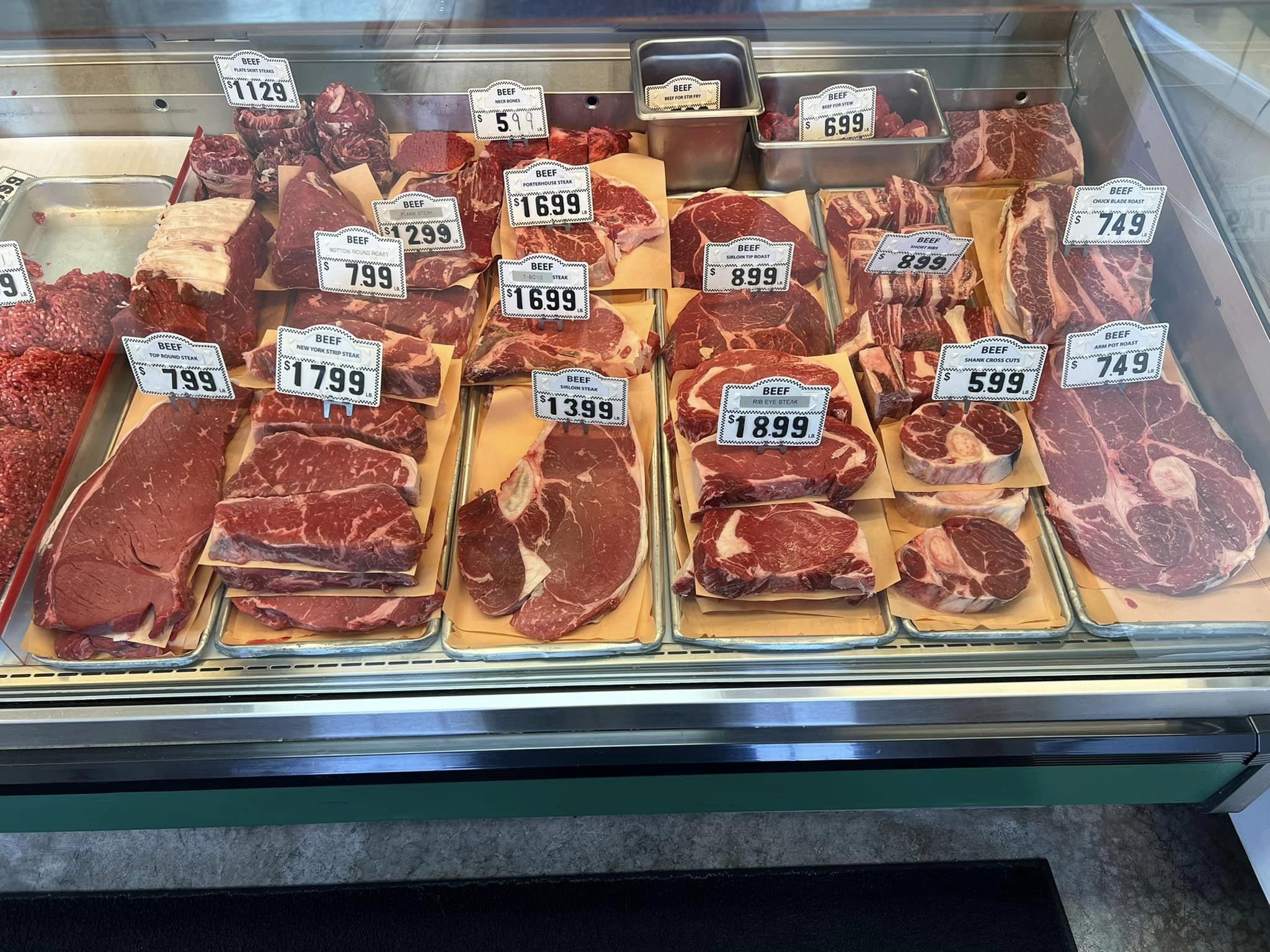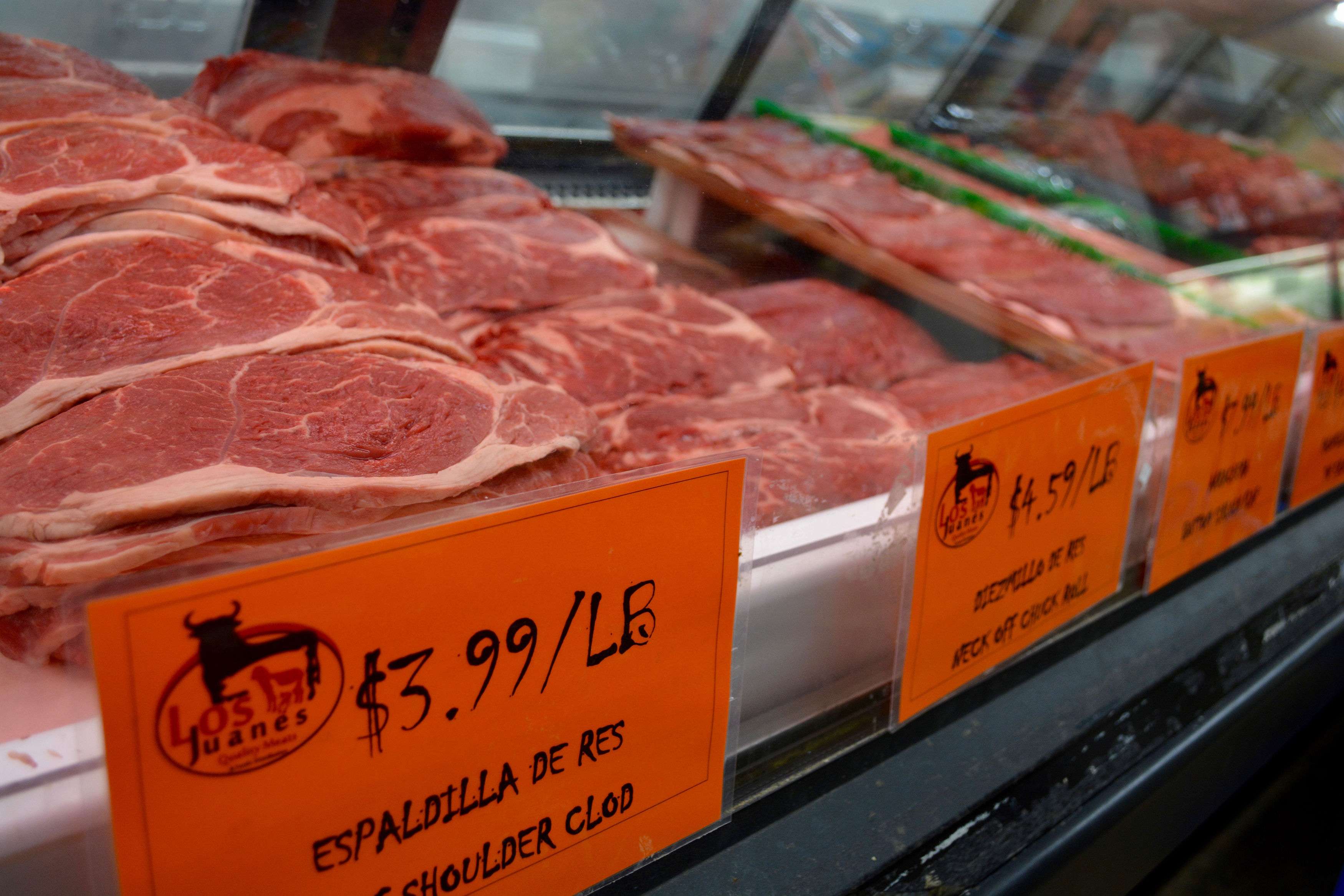Discover Fresh Cuts at Bagley Farms Meat Market Edwardsville IL for Your Following barbeque
Reveal the Art of the Butcher's Cut in a Modern Meat Market
In the ever-evolving landscape of contemporary meat markets, the butcher's cut has transcended its conventional origins, combining age-old craftsmanship with modern methods. Today's butchers are not simply processors of meat; they are well-informed artisans who highlight sustainability and honest sourcing. Their know-how in selecting and preparing cuts tailored to specific cooking requirements uses an exceptional dining experience. Yet, what truly sets the contemporary butcher apart is their capability to create a much deeper link in between consumers and the beginnings of their meat. Exactly how do these masters equilibrium custom with development, and what effects does this have for the future of meat intake?
Development of Butchery Methods
The advancement of butchery methods reflects a rich tapestry of development and adaptation driven by developments in innovation, modifications in consumer demand, and a deeper understanding of meat scientific research. Historically, butchery was a craft passed down through generations, with methods honed over centuries to optimize return and flavor. The industrial change ushered in mechanization, transforming standard practices and making it possible for massive handling.
The mid-20th century saw butchery methods even more fine-tuned by clinical insights right into muscle mass biology and meat aging, enhancing both inflammation and preference. Advancements like vacuum packaging and refrigeration extended item shelf-life, allowing butchers to expand offerings and improve quality assurance. This duration additionally noted the surge of specific devices, such as band saws and meat slicers, which boosted precision and performance in meat handling.

The 21st century has introduced digital technology right into the butchery world. Computerized systems currently help in tracking pet provenance and enhancing cuts to meet specific client preferences. In addition, a rebirth in artisanal butchery has arised, blending standard skills with modern-day knowledge to satisfy consumers looking for honest and lasting meat options. This development underscores a vibrant interplay between practice and development, meeting contemporary needs while maintaining the craft's heritage.
Recognizing Meat Cuts
Comprehending the intricacies of meat cuts is essential for both butchers and customers seeking top quality and value. Each cut originates from a different component of the animal, presenting distinct tastes, structures, and food preparation techniques - bagley farms meat market edwardsville il. Proficiency of these differences not just enhances cooking experiences but likewise makes best use of the utility of each carcass. For butchers, exact cuts reflect skill and regard for the craft, guaranteeing marginal waste and optimal yield.

Understanding muscle make-up is vital; muscle mass utilized more regularly by the animal often tend to be harder and are best fit for slow food preparation techniques, while less-used muscles, like those located in the loin, are a lot more tender and ideal for cooking or roasting. you can look here Experience with these distinctions encourages consumers to make enlightened options, enhancing their cooking endeavors.
Picking Quality Meat
Picking the ideal meat involves greater than just choosing a visually attractive piece from the screen. bagley farms meat market edwardsville il. The art of selecting high quality meat requires a critical eye and knowledge of certain attributes that indicate freshness and quality. Firstly, pay interest to the shade; beef should have a brilliant, cherry-red shade, while lamb should display a soft pink tone, and pork a light pink. This indicates the meat is fresh and hasn't been subjected to oxygen for also long.
Secondly, think about the marbling, which describes the white streaks of fat within the muscle. Proper marbling is an essential sign of inflammation and taste, as it thaws throughout food preparation, boosting the meat's juiciness. Remember, higher marbling typically associates with exceptional top quality cuts, such as USDA Prime.
Texture is another essential factor; meat should feel firm to the touch, not slimy or overly soft. Additionally, bear in mind the fragrance. Fresh meat ought to have a clean, neutral odor, without any kind of sour or repulsive smells.
Combining Cuts With Cooking Techniques

Alternatively, harder cuts like brisket and chuck roast are rich in collagen, which breaks down right into jelly when prepared slowly. These cuts are optimal for braising or sluggish roasting, allowing the meat to tenderize in time and establish deep, intricate tastes. Similarly, cuts such as short ribs and pork shoulder fare well with slow-cooking techniques, where prolonged cooking times change their durable appearances right into delicious dishes.
Lamb shanks and oxtail, which need long term food preparation to soften, are perfect prospects for cooking or slow-moving simmering. These approaches coax out abundant, passionate tastes click for info while keeping dampness. By recognizing the one-of-a-kind characteristics of each cut, cooks and home chefs alike can boost their cooking productions, guaranteeing each recipe is both pleasing and unforgettable.
The Butcher's Duty Today
Navigating the advancing landscape of the modern meat market, the butcher's duty today prolongs past simple preparation of cuts. Contemporary butchers are cooking artisans, instructors, and supporters for sustainable methods.
Along with crafting exact cuts, butchers now engage straight with clients, offering cooking recommendations and tailoring choices to match individual requirements and choices. Their expertise in meat aging, marbling, and flavor profiles equips customers to make informed decisions, boosting their culinary experiences. This tailored service exemplifies the butcher's advancing role as a trusted expert in the kitchen area.
Moreover, butchers are critical in decreasing waste, utilizing whole pets to develop varied products such see this site as sausages and supplies. This thorough approach not only appreciates the pet yet also lines up with modern sustainability objectives. By doing this, the modern butcher symbolizes both practice and innovation, adjusting to an ever-changing market while maintaining the artistry and integrity of their craft.
Conclusion
Proficiency in comprehending varied meat cuts and top quality indications encourages butchers to supply informed suggestions, straightening details cuts with ideal cooking methods. By recognizing historical practices while welcoming contemporary needs, the butcher's function remains vital in today's innovative meat market.